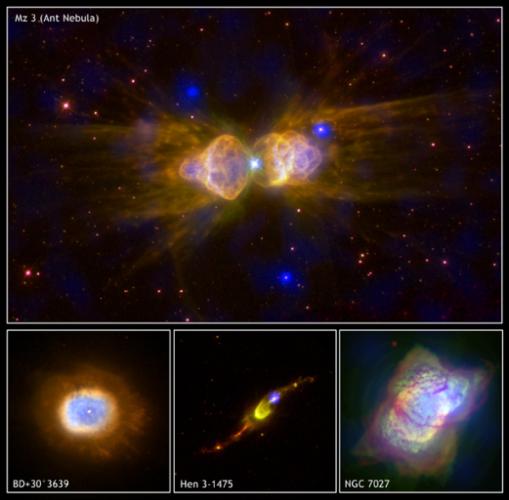Mz 3, BD+30-3639, Hen 3-1475, and NGC 7027: Four newly-formed planetary nebulas in the Milky Way Galaxy.
Caption: This panel of composite images (X-ray/blue, optical/green, and infrared/red) shows a scene of the unfolding drama of the last stages of the evolution of sun-like stars. Planetary nebulas - so called because some of them resemble a planet when viewed through a small telescope - are produced in the late stages of moderate-mass stars' life. Over a period of a few hundred thousand years, much of a star's mass is expelled at a relatively slow speed. This mass loss creates a more or less spherical cloud around the star and eventually uncovers the star's blazing hot core. Later, shock waves generated by the collision of high-speed gas from the hot core with the previously ejected cloud create the multimillion degree bubbles observed by Chandra.
Scale: Mz3 Image is 110 x 75 arcsec
Chandra X-ray Observatory ACIS Images
|


